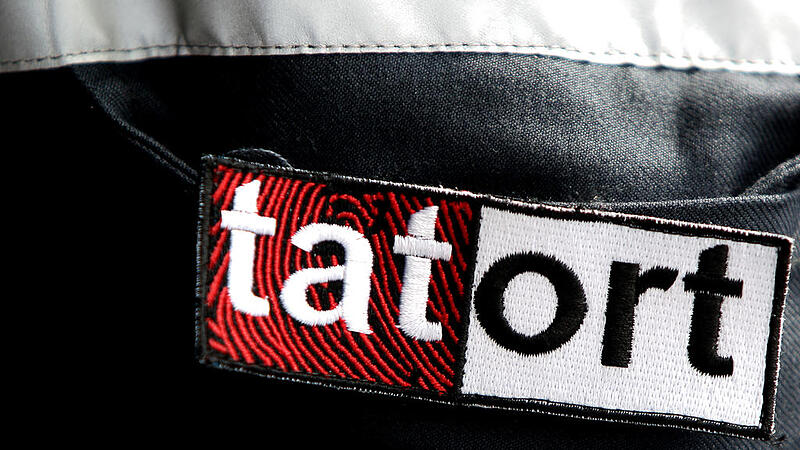Image: (Weibold)
This was explained by Egon Spiegl and Wolfgang List from the criminal psychology office at the Federal Criminal Police Office (BK) in Vienna.
Spiegl and List are operational case analysts, two out of six in Austria. The OFA is a standardized procedure with which the specialists support investigators in solving complex criminal cases in specific areas of crime. There is even a separate training course for this, namely at the German Federal Criminal Police Office (BKA) in Wiesbaden. “Standardised, uniform and science-based” are the requirements of the OFA, according to Spiegl. “Previously, there was advice, often by individuals, in the departments, that was oral and not written down. And that made it incomprehensible,” the official explained the difference to before. “Now it’s documented.”
Six operational case analysts for all of Austria
In addition to List and Spiegl, there are now four other trained operational case analysts in Austria, one each in Vorarlberg and Salzburg, who were trained by the BKA. In Germany itself, civil servants are only admitted to training if they pass an entrance exam. Interested parties need certain prerequisites for the job so that the training makes sense. “First of all, they should come from the field of investigation, ideally from sectors in which the OFA is also used,” said List. Those are homicides and sex offenses in the first place. “The OFA has also proven itself with serial arsonists,” emphasized List. And cruelty to animals is also relevant for operational case analysts.
However, psychological training is not a requirement. What the case analysts need to know, they learn in Wiesbaden. Spiegl himself studied psychology, which is seen as a useful additional education. The BK employee also cleared up a misconception in this context: “OFA is not profiling. Profiling is part of the case analysis, but only a part.” The BKA’s job description reads, among other things, that “creating a profile without the previously carried out case analysis with its central analytical process of crime reconstruction would be dubious and the analysis always refers to the entire case and not just to the suspected personality traits of the unknown perpetrator relates”.
How does the process of a case analysis take place?
But how does the process of a case analysis take place? It starts with the specialists being requested, ideally by the case workers themselves. The case analysts then put together a team of three to five members. “Not anymore, otherwise it would be counterproductive for the progress of the process,” explained List and Spiegl. It is also important that the team is as heterogeneous as possible: age, experience, gender, access are the criteria here. And external experts are called in again and again.
The case analysis itself takes place in six steps: “In the beginning, it’s about collecting information. That means reading the investigation file,” said Spiegl. It is also about finding objectively verifiable information, for example traces at the crime scene such as fingerprints or DNA or medical reports. Witness statements are only considered to be verifiable if they are confirmed by a second person. Then it is sorted, the information is objectified and the irrelevant is filtered out and separated from the rest.
Case Lucile as an example
Quite at the beginning of the process, a possible crime scene or discovery site is visited. It is not uncommon, for example in the case of homicides, to ask whether the place where the find was found is also the scene of the crime. List described a case in which a pollen expert from the University of Natural Resources and Life Sciences was consulted for precisely this problem. She had to examine whether the pollen on the victim of a violent crime matched the pollen picture at the site.
In general, investigations are carried out at crime or discovery sites to determine whether a crime may have taken place as stated in the investigation file. Can one perpetrator have committed the crime alone? What constitution must he or she have – for example, whether a 50-pound woman could have moved a corpse alone or whether she must have had help to do it? And can a crime have been committed at a certain time in a certain place? These are some of the questions that OFA experts have to ask themselves again and again.
Spiegl gave an example of the now well-known Lucile case in Kufstein: the French student Lucile was found dead in January 2014 in the Tyrolean town on the banks of the Inn. At first, the investigators could not imagine that she could be killed there unnoticed. “We looked at it: one colleague was standing at the immediate crime scene, the other on the staircase – and of course exactly at the determined time of the crime. The colleague on the staircase could neither see nor hear the other. That was maybe five meters between the two.” , said the case analyst.
Multiple Phases
The OFA’s task is often to intervene in the first phase of the investigation, which used to be called the “chaos phase” and is now called the “orientation phase”. The analyzers help the clerks and ideally bring structure to the flood of information and tips.
The third phase of OFA is that of description and determination. The team tries to create a report on the case, just like doctors create reports on the clinical picture of patients. This is not intended to be a diagnosis of fact, but an objective and fact-based description. Information gaps are pointed out, which already leads to hypotheses.
The fourth phase is about the interpretation, in which methodical knowledge, background knowledge and experience are used. The focus is also on the perpetrator’s personality, for example what his modus operandi is and was and – in contrast – how he or she personalized his/her crime. “What did a perpetrator do that he or she did not necessarily have to do to commit the crime?” List formulated the question. “Why does one perpetrator stab once or twice, another 30 times?” The modus operandi, on the other hand, concerns the basic procedure, which is changed depending on the situation – for example due to the local and temporal circumstances of the crime.
Daily tasks
In phase five, the OFA team formulates results with coherent and comprehensible justifications, which are presented to the client in phase six. These presentations to the clerks can be quite long and extensive. “One or the other had around 100 participants,” said Spiegl. In the best-case scenario, the experts have found recommendations in which directions the investigations should go, for example whether a DNA series test could be helpful. At the very least, the investigators should have a much deeper understanding of the case. It was important for List and Spiegl to emphasize that this OFA procedure is a standardized procedure.
Anyone who thinks that the operational case analysts sit in the office and wait for a case relevant to them to open up is wrong. In day-to-day business, the experts look at automails that they receive every day about all offenses committed under Section 10 of the Criminal Code (criminal offenses against sexual integrity and self-determination) and about violent crimes, and check whether they are relevant for the ViCLAS database (Violent Crime Linkage Analysis System) are relevant. Behaviors are recorded and compared for ViCLAS so that a perpetrator can be tracked down. For this purpose, important crime scene details are listed and later networked via computer in the case of suspected serial crimes and sexual offences. It’s not just about the behavior of the perpetrators, but also about geographical analyses.
Source: Nachrichten




